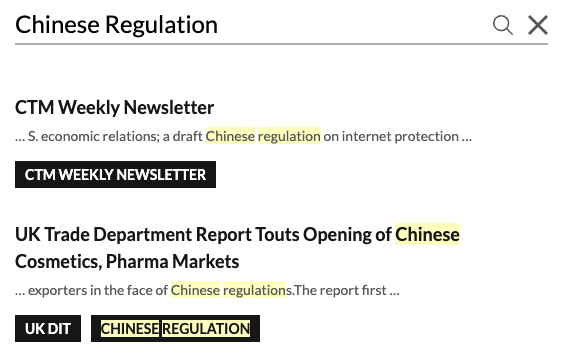On November 4, Beijing Normal University’s School of Economics and Business Administration and the China Institute of Research and Social Development jointly issued the “2021 Report on China’s Import Development.” The report summarizes China’s import policies and provides statistical analyses on China's key import data. It also analyzes the impact of the pandemic on China's imports.
According to a press release (link in Chinese), China’s goods imports accounted for 11.5% of global goods imports, which is an increase from 0.8% in 1978, 2.1% in 1992 and 3.8% in 2001. The report notes that between 2001-2020, China's imports of goods increased by 11.9% annually, 2.2 times the growth rate of goods imports world-wide. Over the past two decades, China contributed 12.1% of the world import growth between 2001 and 2009, with the ratio climbing to 27.7% for the period between 2010 and 2020, according to the report.
China is also the world’s second largest importer for 12 consecutive years, the report shows. China’s goods imports rebounded quickly after the decline over the first five months of 2020 due to the impact of the pandemic. In June of 2020, China’s imports started recovering, with a 3% YOY increase, followed by negative growth due to the pandemic hit in exporting countries. Since then, China’s imports grew 13.47%, 4.8%, 4.6% and 7.6% YOY in September, October, November and December of 2020, respectively. The growth trend continues into 2021. The average monthly growth rate of China's imports of goods was over 15% for the first nine months of 2021.
Imports through e-commerce are a substantial part, almost 20%, of China’s total imports. Cross-border e-commerce imports increased from 1.9 trillion yuan (approximately USD 297 billion) in 2018 to 2.8 trillion yuan (USD 438 billion) in 2020. Among these, China’s e-commerce retail imports exceeded 100 billion yuan (USD 15.6 billion) in 2020.
With regard to regional trade, China's imports from RCEP countries witnessed growth over the past decade, according to the report. In 2020, China's imports from RCEP members accounted for 37.72% of China's total imports, from 34.8% in 2012. Measured in value, China’s imports from RCEP grew from USD 632.808 billion in 2012 to USD 775.396 billion in 2020, with an average annual growth rate of 2.57%.
Imports from countries participating in the Belt and Road Initiative also grew. The report points out that between 2014-2020, China’s imports from 64 countries along the Belt and Road routes rose from USD 483.442 billion to USD 569.906 billion, with an average annual growth rate of 2.78%. Imports from these 64 countries take up 27.72% of China’s total imports in 2020, up from 24.68% in 2014.
Similarly, China’s imports from Central and Eastern Europe increased from USD 633 million in 2001 to USD 26.725 billion in 2020, with an average annual growth rate of 21.77%. Imports from the region only account for a small portion of Chinese imports though, 1.3% in 2020, up from 0.26% of China’s total import in 2001. Going in the other direction, exports to China took up of 0.33% of the total exports of the region in 2001, which later climbed up 1.47% in 2020.
Looking at individual trading partners (link in Chinese), in 2020, China imported the most from Taiwan (9.76%), followed by Japan (8.51), South Korea (8.4%), the United States (6.56%) and Australia (5.59%).
In terms of goods categories (link in Chinese), the goods imported under HS code 85 (Electrical machinery and equipment and parts thereof; sound recorders and reproducers, television image and sound recorders and reproducers, and parts and accessories of such articles) ranked the highest (26.69%) in 2020, followed by HS 27 (Mineral fuels, mineral oils and products of their distillation; bituminous substances; mineral waxes) (13.02%), HS 84 (Nuclear reactors, boilers, machinery and mechanical appliances; parts thereof) (9.34%), HS 26 (Ores, slag and ash)(8.76%) and HS 90 (Optical, photographic, cinematographic, measuring, checking, precision, medical or surgical instruments and apparatus; parts and accessories thereof) (4.82%).
The report also highlights the increasingly important role imports will play in the Dual Circular, a development model first introduced by President Xi in 2020. It notes that “the essential meaning of taking the domestic cycle as the main body is to make the domestic economy bigger and stronger; the essential meaning of the mutual promotion of the domestic and international dual cycles is to make full use of international resources and international markets to serve domestic economic development, as well as attach great importance to the role of domestic economic development in promoting the development of international markets.” Therefore, "actively expanding imports is an important part of our country's new round of high-level opening up.”

